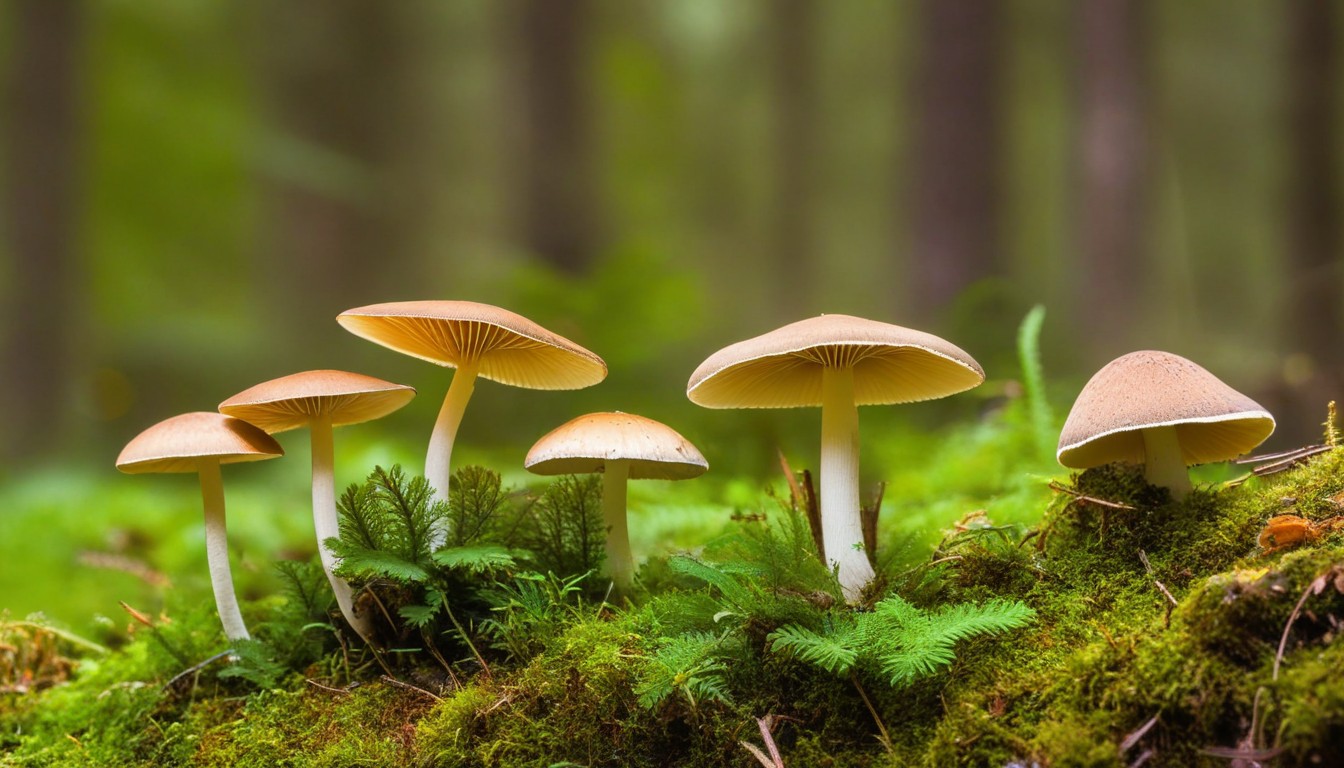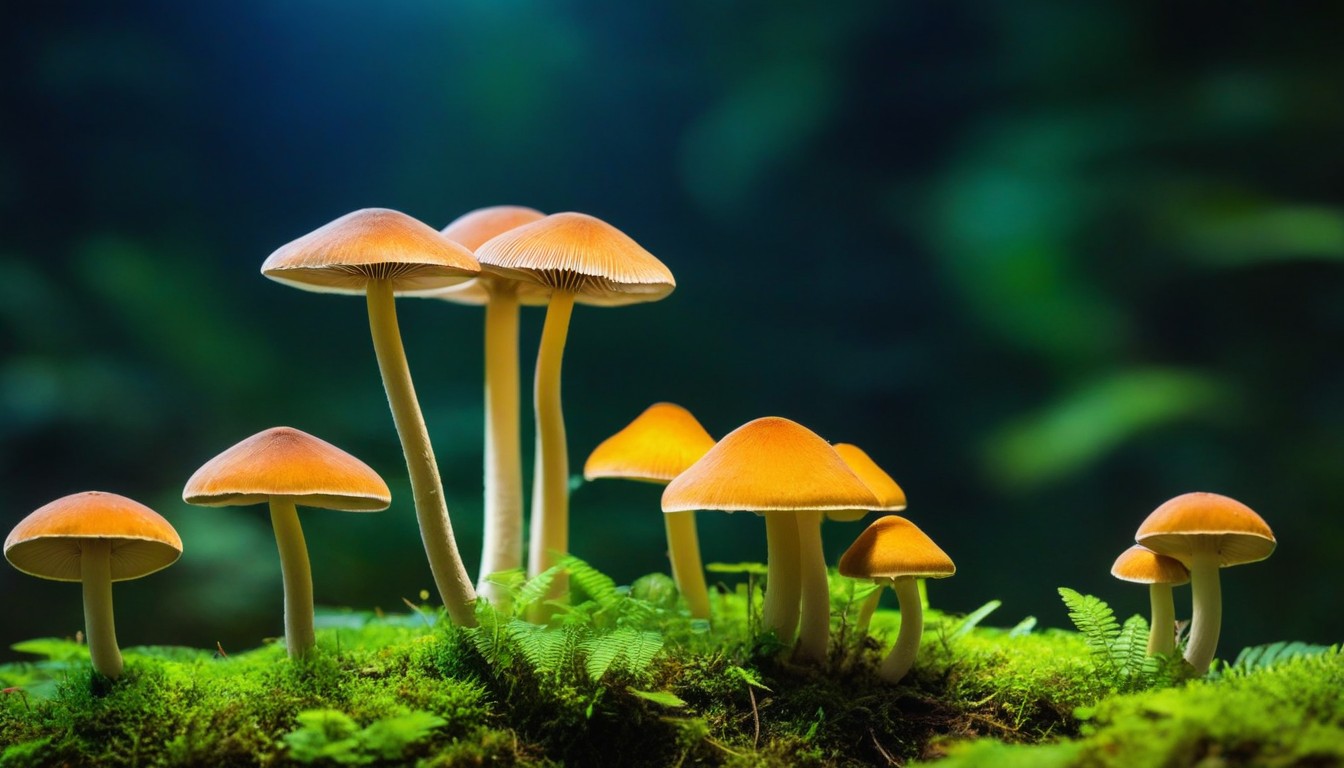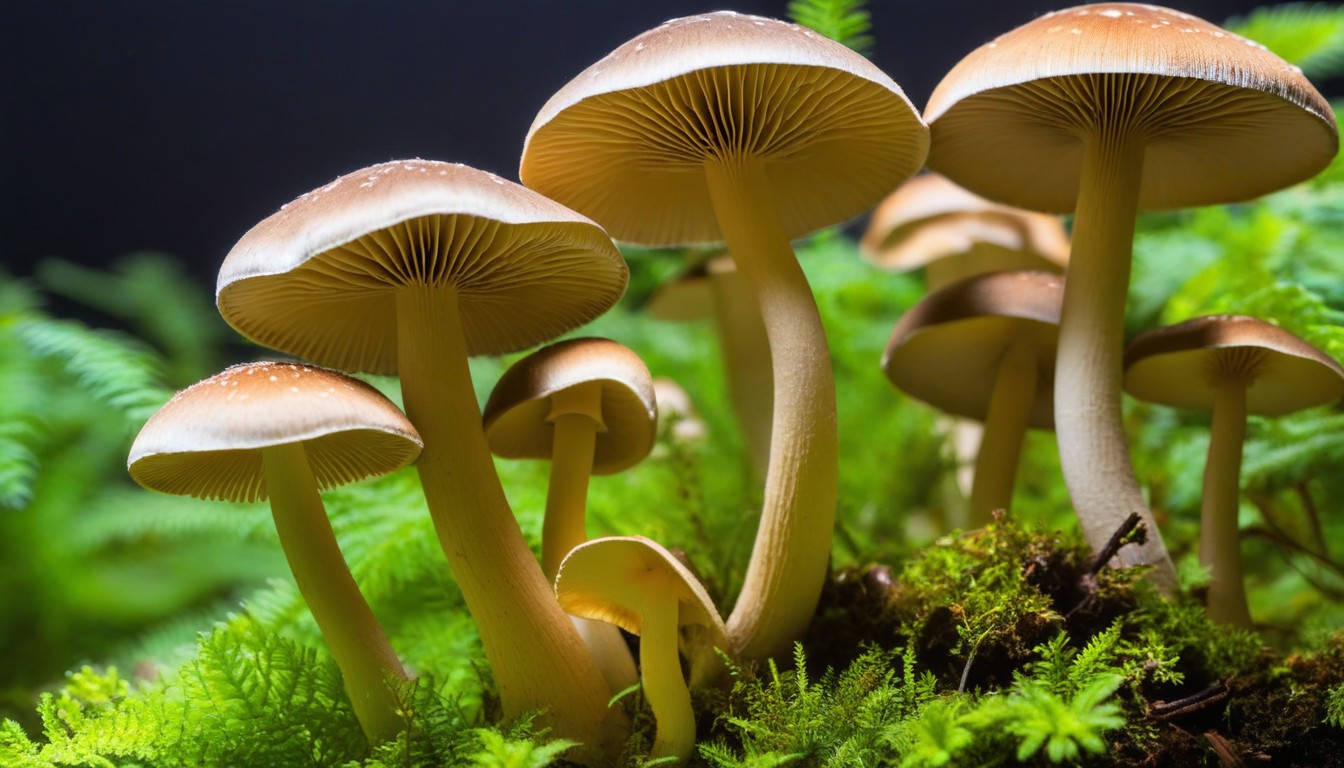If you’re interested in the magical world of psychedelic mushrooms and want to explore it, growing your own is a great place to start. While it might seem intimidating at first, with the right guidance, you can successfully cultivate your own mushrooms safely and efficiently.
Whether you’re completely new to mushroom cultivation or already have some experience, this comprehensive guide will provide you with expert advice and tips to ensure a successful grow. We’ll guide you through each step of the process, from choosing the right mushroom species to harvesting and drying your mushrooms.
Not only is cultivating your own mushrooms a fun and rewarding experience, but it also allows you to control the quality and purity of your product. With the right techniques and precautions, you can grow your own mushrooms safely and enjoy the many benefits that they have to offer.
Key Takeaways
- Growing your own psychedelic mushrooms can be a fun and rewarding experience.
- Choosing the right mushroom species and preparing the ideal substrate are crucial for success.
- Maintaining optimal conditions like temperature, humidity, and air circulation is crucial for optimal mushroom growth.
- Harvesting and drying your mushrooms properly is important for long-term storage.
- Familiarize yourself with the legal landscape and take appropriate safety precautions throughout the cultivation process.
Understanding Psychedelic Mushrooms
If you’re considering growing your own psychedelic mushrooms, it’s important to have a good understanding of what they are.
Psychedelic mushrooms, also known as magic mushrooms, contain psychoactive substances like psilocybin and psilocin that can produce altered perceptions, thoughts, and feelings. These mushrooms have been used for centuries in spiritual practices and rituals, and are now becoming more popular for recreational use.
There are many different species of psychedelic mushrooms, each with its own unique characteristics and effects. Some of the most common species include:
|
Species Name |
Psilocybin Content |
Effect Duration |
|---|---|---|
|
Psilocybe cubensis |
High |
4-6 hours |
|
Psilocybe semilanceata |
High |
4-6 hours |
|
Psilocybe cyanescens |
Very high |
6-8 hours |
It’s important to note that while many people enjoy the effects of psychedelic mushrooms, they can also produce negative experiences, especially if used improperly or in the wrong setting. It’s essential to understand the risks and take appropriate safety precautions, which we’ll discuss in more detail later in this guide.
“Psychedelic mushrooms have been used for centuries in spiritual practices and rituals, and are now becoming more popular for recreational use.”
Legal considerations are also an important aspect of understanding psychedelic mushrooms. While some countries and states have decriminalized or legalized their use, possession, and cultivation, others have strict laws and penalties in place. It’s important to research the laws in your area and take appropriate measures to ensure you’re not breaking any laws.
With a basic understanding of psychedelic mushrooms, their effects, and legal considerations, you can now move on to the next section to learn more about choosing the right species for your cultivation venture.
Choosing the Right Mushroom Species
Choosing the right mushroom species for cultivation is crucial for a successful harvest. Some mushroom species are easier to grow than others and differ in their potency and effects. In this section, we will discuss the most common and popular mushroom species known for their psychedelic properties to help you make an informed decision.
|
Mushroom Species |
Potency Level |
Preferred Growing Conditions |
|---|---|---|
|
Psilocybe cubensis |
Medium |
Warm temperatures between 70-85 F, high humidity, and good air circulation |
|
Psilocybe semilanceata |
High |
Cool temperatures between 60-70 F, high humidity, and indirect light |
|
Gymnopilus junonius |
High to Very High |
Cool to moderate temperatures between 60-75 F, high humidity, and indirect light |
Psilocybe cubensis is the most popular mushroom species for cultivation due to its ease of growth and potency. Its effects include euphoria, altered perception, and increased creativity. Psilocybe semilanceata and Gymnopilus junonius are less common but have higher potency levels. However, they require more specific growing conditions and are more challenging to cultivate.
When choosing a mushroom species for cultivation, consider your level of experience, available growing space, and desired potency level. Research the specific needs of each species to ensure that you can provide the ideal growing conditions for your chosen mushroom.
Setting Up Your Cultivation Space

Creating the perfect environment for mushroom cultivation is essential for success. Here are some important factors to consider when setting up your cultivation space:
- Location: Choose a location with plenty of natural light, but that’s not in direct sunlight. Avoid high traffic areas, and make sure it’s well ventilated.
- Temperature: The ideal temperature for mushroom growth is between 65-75 degrees Fahrenheit. You can use a thermometer to monitor the temperature and make adjustments as needed.
- Humidity: Mushrooms need a humid environment to grow properly. Humidity levels should be kept between 75-85%. You can use a humidifier or a spray bottle to maintain the ideal humidity levels.
- Lighting: Grow lights can be used to supplement natural light. Make sure the light is not too bright, and keep it on for about 12 hours a day.
- Cleanliness: A clean cultivation space is critical for success. Make sure to sanitize all surfaces and tools that will come into contact with your substrate and mushrooms.
Once you have set up your cultivation space, it’s important to regularly monitor and maintain the ideal conditions for optimal mushroom growth. In the next section, we will discuss how to prepare your substrate for mushroom cultivation.
Preparing Your Substrate

When it comes to growing your own psychedelic mushrooms, selecting and preparing the right substrate is essential. Substrate is the material that provides nutrition for your mushrooms to grow. While there are many different types of substrate available, the most common options include grain, straw, and sawdust.
Grain is a popular substrate option for beginners as it is readily available and easy to work with. Common grains used for substrate include rye, millet, and wheat berries. Grain provides a good source of nutrients for your mushrooms to grow, making it an ideal option for those looking to achieve a high yield.
Straw is an excellent substrate for those looking to cultivate bulk quantities of mushrooms. Straw is readily available and relatively cheap, making it a cost-effective option. Before using straw as a substrate, it is essential to pasteurize it to kill off any microorganisms that may compete with the mycelium for resources.
Sawdust is a popular substrate option for those looking to cultivate certain species of mushrooms, such as oysters and shiitakes. Sawdust is a good option for those with limited space, as it can be compressed into small bags and sterilized in a pressure cooker. It’s important to note that different species of mushrooms require different types of sawdust, so be sure to do your research beforehand.
Before you begin the process of preparing your substrate, it’s important to ensure that all materials are clean and free of contaminants. This will help to prevent the growth of unwanted bacteria and ensure optimal conditions for the growth of your mushrooms.
Inoculation and Colonization
Now that you have prepared your substrate, it’s time to inoculate it with mushroom spores or mycelium to initiate the colonization process.
The first step is to obtain your spores or mycelium. You can purchase spore syringes or spore prints from reputable vendors or obtain them from mushroom enthusiasts. If you are using mycelium, you can purchase pre-made spawn or create it yourself by growing mycelium on a small amount of grain.
Once you have your spores or mycelium, it’s time to inoculate your substrate. There are several methods you can use to do this:
- Spore Syringe Method: Using a sterile syringe, inject the spores directly into the substrate. This method is simple, but it can take longer for colonization to occur.
- Spore Print Method: Place a spore print onto the substrate and mist it with distilled water to encourage spore germination. This method can be less reliable than using a spore syringe.
- Mycelium Injection Method: Using a sterile syringe filled with liquid mycelium, inject it into the substrate. This method can be faster than using spores.
After inoculation, it’s important to keep your substrate in a warm and humid environment to encourage colonization. A temperature between 70-75°F and a humidity level of at least 90% is ideal. You can also use a plastic bag or container to create a mini greenhouse for your substrate.
Colonization can take anywhere from 1-4 weeks, depending on the species of mushroom and the conditions of your cultivation space. During this time, it’s important to check your substrate regularly for contamination and to make any necessary adjustments to the environment.
Once colonization is complete, you can move on to the next step in the process: maintaining optimal mushroom growth.
Maintaining Optimal Mushroom Growth

Once your substrate is colonized, it’s important to maintain the ideal conditions for mushroom growth. Here are some crucial tips to ensure that your mushrooms thrive:
Temperature
Maintaining the proper temperature is key to ensuring optimal mushroom growth. Most species of psychedelic mushrooms prefer temperatures between 70-75°F (21-24°C) during the fruiting stage. Keep a close eye on the temperature and adjust as necessary to prevent overheating or cooling.
Humidity
Humidity is also crucial for mushroom growth, with most species requiring a humidity level of 90-95%. To maintain the proper humidity, you can mist your grow chamber regularly or use a humidifier.
Air Circulation
Proper air circulation is necessary to prevent the buildup of carbon dioxide around your mushrooms. To ensure optimal air circulation, you can use a fan or install an air exchange system.
Watering
Watering is another important aspect of mushroom cultivation. Your mushrooms need a consistent source of water to grow properly. In general, misting your substrate 2-3 times a day is sufficient. Avoid overwatering, as this can lead to contamination.
Monitoring Mushroom Growth
Regularly monitor your mushrooms for signs of contamination or disease. Be sure to remove any contaminated mushrooms immediately and sterilize your equipment before continuing. By following these tips, you can ensure optimal mushroom growth and a successful harvest.
Harvesting and Drying Your Mushrooms
Congratulations on successfully cultivating your psychedelic mushrooms! The next steps involve harvesting and drying your mushrooms for optimal preservation and consumption.
Harvesting your mushrooms involves picking the mature mushrooms from the substrate. It’s important to handle them gently to avoid damaging the delicate caps and stems. Use a sharp knife or scissors to gently cut the mushrooms at the base of the stem. Ensure that the substrate remains undisturbed for continued growth.
After harvesting, you will need to dry your mushrooms to remove excess moisture. High moisture content can lead to spoilage and bacterial growth. Drying your mushrooms also concentrates their potency, making them more effective when consumed.
Pro Tip: Avoid drying your mushrooms in direct sunlight, as this can degrade their potency.
There are various methods for drying your mushrooms. The most common method is air drying, which involves laying your mushrooms out on a clean, dry surface in a well-ventilated area. You can also use a fan or dehydrator to speed up the drying process.
When your mushrooms are dry, they should snap easily when bent, and the stems should be completely brittle. At this point, they are ready for storage. Store your dried mushrooms in a cool, dark, and dry place for maximum potency and longevity.
Safety Precautions and Legal Considerations

While cultivating your own psychedelic mushrooms can be a rewarding experience, it’s important to note that there are certain risks and legal considerations involved. It’s crucial to take the necessary precautions to ensure your safety and to avoid any legal issues.
Safety Precautions
When working with mushrooms, it’s important to be aware of the potential hazards involved in the process. Here are some safety precautions to keep in mind:
- Wear gloves and a mask: When handling mushroom spores or mycelium, you should wear gloves and a mask to avoid inhaling or coming into contact with any harmful substances.
- Cleanliness is key: Sterilize all equipment and maintain a clean environment throughout the cultivation process to avoid contamination and the growth of harmful bacteria.
- Keep mushrooms out of reach: If you have children or pets, make sure to keep the mushrooms and any materials related to their cultivation out of reach.
- Dispose of waste properly: Discard any leftover substrate or contaminated materials safely and in accordance with your local regulations.
Legal Considerations
Psychedelic mushroom cultivation is illegal in many parts of the world and can lead to serious legal consequences if caught. In the United States, for example, psilocybin mushrooms are classified as a Schedule I controlled substance, making them illegal to possess, sell, or cultivate.
It’s important to note that laws surrounding psychedelic mushrooms can vary depending on your location. Before embarking on any cultivation endeavors, be sure to research the laws in your area and proceed with caution to avoid any legal issues.
Troubleshooting Common Issues
While growing your own psychedelic mushrooms can be a fascinating experience, it can also present some challenges. In this section, we will address common issues that might arise during the cultivation process and provide troubleshooting tips to help you overcome them.
Problem: Mold
Mold is a common problem that can occur during the cultivation process. It can be caused by a lack of cleanliness, poor air circulation, or excessive humidity in your cultivation space. If you notice mold, it’s important to act quickly to prevent it from spreading. Remove any contaminated substrate and sterilize your cultivation space thoroughly. To prevent future mold growth, increase air circulation and maintain appropriate humidity levels.
Problem: Slow Growth
If your mushrooms are growing slowly or not at all, it may be due to a lack of nutrients in your substrate or improper environmental conditions. Check the temperature and humidity levels in your growing space and adjust them accordingly. Also, make sure your substrate has enough nutrients by adding additional supplements if necessary.
Problem: Contaminants
Contaminants can sometimes enter your growing environment and compromise the quality of your mushrooms. To prevent contamination, make sure to sterilize all equipment and materials before use. Also, maintain a clean growing space and avoid introducing outside contaminants.
Problem: Small or Deformed Mushrooms
If your mushrooms are small or deformed, it may be due to improper environmental conditions or genetic factors. Check the temperature and humidity levels in your growing space and adjust them as needed. Also, consider selecting high-quality mushroom spores or mycelium for your inoculation process to avoid genetic issues.
Problem: Uneven Pinning
Uneven pinning occurs when mushrooms begin to form unevenly on your substrate. It can be caused by uneven moisture levels or improper lighting. To solve this issue, make sure to maintain consistent moisture levels throughout your substrate and use appropriate lighting to encourage even mushroom growth.
Problem: Poor Yield
If your mushroom yield is poor, it may be due to a lack of nutrients in your substrate or poor environmental conditions. Check the temperature, humidity, and air circulation in your growing space and make adjustments as needed. Additionally, consider adding additional supplements to your substrate to increase nutrient levels.
Conclusion
Congratulations! You have reached the end of our beginner’s guide to growing your own psychedelic mushrooms safely. We hope this comprehensive guide has equipped you with the knowledge and skills necessary to embark on a successful cultivation journey.
Remember, growing psychedelic mushrooms comes with its fair share of risks and legal considerations, so it’s important to always follow safety precautions and stay informed of the current legal landscape.
By carefully choosing the right mushroom species, setting up the optimal cultivation space, preparing your substrate, inoculation and colonization, maintaining ideal growth conditions, and properly harvesting and drying your mushrooms, you can enjoy the rewards of growing your own psychedelic mushrooms.
Happy Growing!
FAQ
Can anyone grow their own psychedelic mushrooms?
Yes, anyone can grow their own psychedelic mushrooms with the right knowledge and resources. However, it is important to be aware of the legal considerations and safety precautions associated with cultivation.
Are psychedelic mushrooms legal to grow?
The legality of growing psychedelic mushrooms varies depending on your location. It is essential to research and understand the laws and regulations in your area before starting your cultivation journey.
What are the ideal conditions for mushroom cultivation?
Mushroom cultivation requires specific conditions, including the right temperature, humidity, lighting, and air circulation. Creating a controlled environment that mimics the natural habitat of the mushrooms is crucial for successful growth.
How long does it take for mushrooms to grow?
The time it takes for mushrooms to grow depends on various factors, such as the species, the substrate, and the cultivation conditions. Generally, it can take anywhere from a few weeks to a couple of months for mushrooms to reach maturity.
What is the best method for drying mushrooms?
The best method for drying mushrooms is to use a food dehydrator or a desiccant like silica gel. It is important to dry the mushrooms thoroughly to prevent mold growth and ensure long-term storage.
What are the common issues that may arise during mushroom cultivation?
Common issues in mushroom cultivation include contamination, low yields, pest infestations, and inadequate fruiting. It is crucial to address these issues promptly by implementing proper sanitation practices and adjusting cultivation conditions.
How can I ensure the safety of my cultivation process?
To ensure safety during the cultivation process, it is important to wear gloves, a mask, and follow proper sanitation practices. Additionally, research and follow guidelines for safe handling and consumption of psychedelic mushrooms.
Can I consume the mushrooms I grow?
The consumption of psychedelic mushrooms is a personal choice and subject to legal restrictions. It is essential to understand the laws in your area and make informed decisions regarding the use of the mushrooms you grow.
